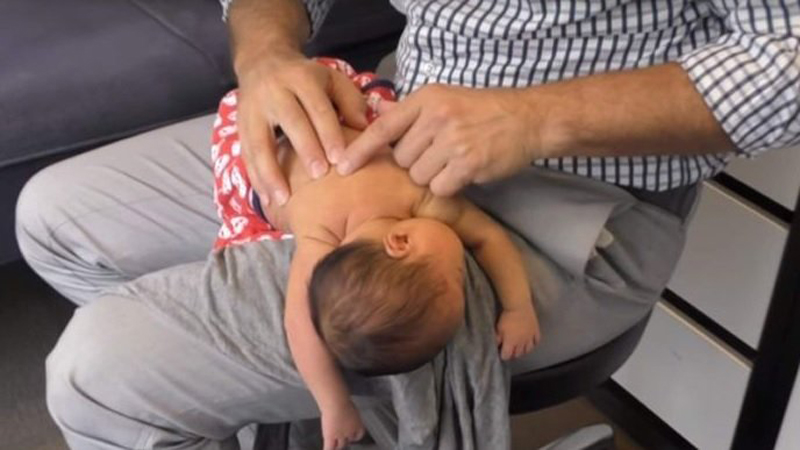Prognostic Significance of Subgroup Classification for Infant Patients with Crying Disorders: A Prospective Cohort Study
SOURCE: J Can Chiropr Assoc. 2012 (Mar); 56 (1): 40–48
Joyce Miller, BS, DC and Dave Newell, BS, MSc, PhD
Anglo-European College of Chiropractic
(Bournemouth University),
3-15 Parkwood Road,
Bournemouth, Dorset BH5 2DF, UK
INTRODUCTION: Few convincing treatment options have been identified for the excessively crying infant. One explanation may be a lack of identification of patient subgroups. This study used a clinically plausible categorization protocol to subgroup infants and compared changes in symptoms between these subgroups during treatment.
METHODS: An observational cohort design was employed. All infants presenting with excessive infant crying between July 2007 and March 2008 were categorized into three subgroups,
(B) irritable infant syndrome of musculoskeletal origin (IISMO) and
(C) inefficient feeding crying infants with disordered sleep (IFCIDS) based on history and physical findings.
Mothers completed questionnaires which rated their own and their child’s characteristics prior to and at the end, of a course of manual therapy. Independent associations between infant subgroups and changes in continuous outcomes (crying, stress, sleep, and consolability) were assessed. Multivariable analysis of covariance was used to identify and control for potential confounders.
RESULTS: A total of 158 infants were enrolled. There was no significant difference in demographic profile between groups or any significant difference in infant crying or level of maternal stress at the start. Only the putative subgroups were significantly associated with differences in outcomes. In general, colic babies improved the most in consolability and crying.
There are more articles like this @ our:
CONCLUSION: Babies with excessive crying should not be viewed as a homogenous group. Treatment outcomes may be improved by targeting appropriate subgroups prior to treatment.
KEYWORDS: Subgroups; excessive crying of infancy; infant colic
From the Full-Text Article:
Introduction
Infant crying is a normal and natural activity and may occur for any number of reasons, including hunger, illness, tiredness or a need for comfort. However, some babies will not settle, even when their needs have been met and every method of soothing tried.
The excessively crying infant is difficult to understand and manage both for parents and clinicians. It is a prevalent and expensive condition,1 with as many as one in five parents reporting problems regarding infant irritability or crying during the infants’ first three months and is the most widely reported parental concern in the first year of life. [1–5] Excessive crying was traditionally thought to be harmless with no long-term consequences, however, associations with maternal depression [3, 4] and child abuse [6] may question this assumption.
Despite concentrated research efforts, no single intervention has been identified as superior in efficacy for infants with excessive crying. One plausible explanation common to other non-specific clinical presentations may be that these infants do not form a homogenous group, but rather are composed of subgroups that respond differently to treatment or differ in their natural course or aetiology. Clinical observation supports the idea that all excessive infant crying is not colic and that despite aetiologies being varied, they remain clinically recognisable. [7–11] However, unanimity concerning any possible classification is lacking. The ultimate goal of classification systems is to improve clinical outcomes, since each case would be treated relative to the signs and symptoms identifying each group, and more efficient targeting of clinical effort might be achieved
Previous investigations have hinted at the possible presence of different subgroups of excessively crying infants, which have been based on clinical observation. [7–12] However, a firmer basis for sub grouping is needed.
This study aimed to determine any possible justification of the use of three a priori clinically determined categories of excessively crying infants, based on differences in parent reported outcomes after a course of chiropractic treatment.
Read the rest of this Full Text article now!


Leave A Comment